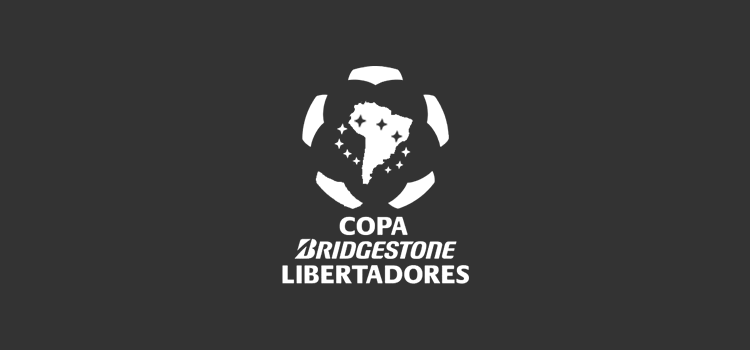Argentine involvement in the Copa Libertadores
The group stage of the Copa Libertadores – South America’s premier cup competition – has concluded, with four of Argentina’s six representatives qualifying for the knockout phase. River Plate, San Lorenzo, Godoy Cruz, and Lanús will all progress whilst Estudiantes and Atlético Tucumán have been eliminated in third place in their respective groups and will therefore drop into the Copa Sudamericana.
Estudiantes were handed a tough draw in Group A alongside Atlético Nacional, last year’s champions and current holders of the Recopa Sudamericana, Brazil’s Botafogo, and Barcelona S.C. from the Ecuadorian port city of Guayaquil. Botafogo and Barcelona S.C. progressed with ten points, whilst Estudiantes finished in third, with nine points. Surprisingly, Atlético Nacional propped up the group and their continental campaign is over until next year. Estudiantes’ campaign garnered headlines due to the return of the iconic Juan Sebastian Verón. The club president came out of retirement solely for this competition and showed that although he still has bags of ability, his legs are understandably looking every day of his 42 years. Estudiantes will now drop into the Copa Sudamericana, South America’s Europa League equivalent.
River Plate comfortably qualified from Group C along with Ecuadorian side Emelec, topping the group with 13 points. In truth, River cantered to qualification in this group, which also contained Deportivo Independiente Medellin and Melgar, and even had the luxury of resting a few players in the final game. It’s impressive that River have been able to compete both domestically and in the Libertadores, something that many teams across South America often find difficult. In-form strikers Sebastian Driussi and Lucas Alario – the latter of whom has recently been called up to the Argentina squad – have netted six between them in the group phase.
Pope Francis’ beloved San Lorenzo topped a tight Group D, finishing ahead of Atlético Paranaense by virtue of having a better goal difference of one. San Lorenzo also had a better head-to-head record against the Brazilians, winning one fixture 3-0 and losing the other 1-0. Another Brazilian side, Flamengo, harboured real hopes of lifting this year’s trophy and ending their drought which dates back to 1981 when the side featured the legendary Zico. Despite their expensively assembled squad and high hopes Flamengo finished in third place on nine points, one behind the two sides that qualified. Making up the numbers in fourth place was Chile’s Universidad Católica.
In Group E, Atlético Tucumán finished third behind Palmeiras and the fantastically named Bolivian side Jorge Wilstermann. It’s no disgrace for Atlético Tucumán, a club performing at this level for the first time in their history and one that was playing in Argentina’s third tier a decade ago. The club comically made international headlines earlier in the competition, when they were paired with Ecuadorian side El Nacional in the preliminary round. After a 2-2 draw in the first leg, Atlético Tucumán travelled to Ecuador for the second leg. The plan was to fly into Guayaquil and then head up to Quito on the afternoon of the game in an attempt to avoid the problems associated with playing at high altitude. However, something was amiss with their paperwork, meaning the club missed their flight and arrived in Quito late.
The story didn’t end there. Atlético Tucumán, showing their vast inexperience at the level, also arrived without their kit. Luckily for them, the Argentina under-20 side had recently faced their Ecuadorian counterparts in that very stadium, so the club side ran out in the colours of their national team. Ninety minutes after its scheduled start, the game kicked off, going against COMNEBOL rules that state 45 minutes is the maximum delay permissible. The Argentine visitors won 1-0 and hence progressed to the group stage.
In Group F, Mendoza’s Godoy Cruz finished runner-up to Brazilian side Atlético Mineiro, comfortably ahead of Paraguay’s Club Libertad, who finished five points behind in third place. Lanús topped group G, qualifying alongside Brazilian side Chapecoense, the team who were tragically involved in a plane crash last year on their way to a game in Medellin. Considering the scale of the disaster, the club have done well to bounce back on the field, and will head into the last 16 against all the odds. Both sides gained ten points during the group phase.
Argentina will therefore put forward four teams to the last 16, making up 25 percent of the remaining participants. Argentina is the most successful country on the continent when it comes to the Copa Libertadores, producing 24 champions. To put that into perspective, all of the other countries combined have won 33 titles. Independiente and Boca Juniors are the two most successful sides on the continent, lifting the trophy 13 times between them.
Of the Argentine sides left, form would dictate that River Plate have the best chance of going all the way and adding to their three titles. Elsewhere, in-form Brazilian side Gremio, who topped Group G and lead their national championship with maximum points, will fancy their chances. The beauty of this competition is that anything can happen, given the travelling distances involved and the varying climates across the continent, however, a betting man would tip a side from Argentina or Brazil. The competition is now spread out over the calendar, rather than the old format which was squeezed into half a year, with the next round beginning in July.
